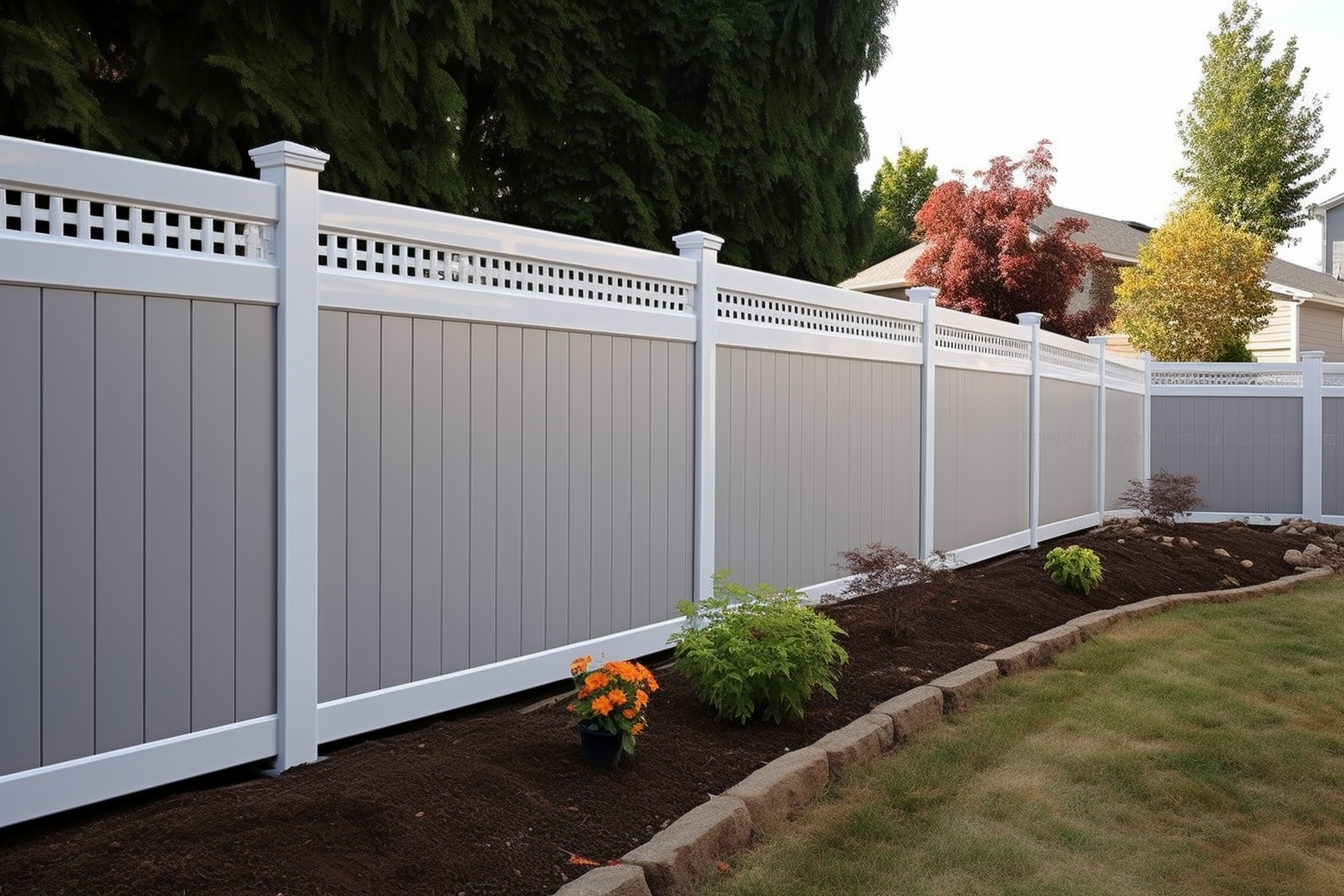Top Garden Fence Types, Costs, Installation, and Maintenance Tips in Canada 2025
Choosing the right garden fence in Canada improves security, privacy, curb appeal and must withstand harsh winters. This article reviews the best fencing options for Canadian homeowners in 2025, with estimated installation costs, practical installation tips, and climate-appropriate maintenance advice.

Common Garden Fence Types for Homeowners in Canada
Garden fences in Canada must balance function and durability, especially against extreme weather. Here are the most popular types:
- Wood FencesA classic and customizable option, wood fences offer natural aesthetics with solid privacy. Cedar and pressure-treated pine are common choices due to their resistance to rot and insects. However, wood requires regular upkeep, including staining or sealing every 2–3 years to maintain durability and appearance.
- Vinyl (PVC) FencesVinyl fences are low-maintenance and weather-resistant, available in various styles and colors—often mimicking wood grain. They hold up well in Canadian winters, requiring only occasional cleaning with no need for painting.
- Aluminum FencesLightweight, rust-proof, and modern-looking, aluminum fencing is ideal for defining boundaries. Though not designed for privacy, it offers strong durability and needs minimal maintenance, even in snowy conditions.
- Chain-Link FencesKnown for affordability and practicality, chain-link fences are great for property security and pet containment. Vinyl-coated versions offer enhanced weather resistance and airflow, reducing wind pressure.
- Wrought Iron FencesA premium option, wrought iron combines strength with an ornamental finish. While more expensive, it withstands winter weather well, requiring only occasional rust prevention treatments.
- Innovative and Eco-Friendly AlternativesUnique options include gabion walls (stone-filled wire cages), horizontal slat fences, laser-cut metal panels, and recycled-material fencing. Living fences made from hedges or climbing plants add natural privacy but demand frequent care.
2025 Fence Installation Cost Breakdown for Canada
Installation costs vary by material, terrain, and region. Below are average price ranges (per linear foot) in 2025 for provinces like Ontario:
- Wood Fences: $40–$75
- Vinyl Fences: $45–$80
- Aluminum Fences: $7–$32
- Chain-Link Fences: $13–$50
- Wrought Iron Fences: $70–$130
Additional Costs:
- Fence removal: $6–$15 per linear foot
- Concrete footings: $10–$15 per hole
- Gates, hardware, and permit fees
Prices depend heavily on local labor rates, materials, and site conditions. Always gather multiple quotes.
Importance of Material Selection for Canadian Winters
Canada’s freeze-thaw cycles and heavy snowfall demand sturdy fencing materials:
- Wood needs treatment and ongoing maintenance to prevent warping or rot.
- Vinyl resists storms well but must be installed securely to avoid cold-related cracking.
- Aluminum and Wrought Iron offer excellent durability when treated with anti-rust coatings.
- Vinyl-Coated Chain-Link provides a balance between cost-efficiency and winter resistance.
To prevent frost heave, fence posts should be anchored 2.5 to 3 feet deep with concrete.
Privacy Fence Alternatives and Local Regulations
Solid wood, vinyl, and composite fences are preferred for privacy. Alternatives include bamboo screens or living hedges for a natural look.
Before installation, check:
- Local height limits (often around 6.5 feet for privacy fences)
- Zoning laws and HOA rules
- Permit requirements and associated costs
Ignoring local rules may result in fines or mandatory removal.
Professional Installation Tips for Canadian Conditions
Proper installation ensures long-lasting results:
- Post Setting: Posts must be buried 2.5–3 feet deep with concrete to avoid frost damage.
- Hiring Installers: Pros handle terrain issues, permits, and alignment efficiently.
- Utility Marking: Always contact local services (e.g., Ontario One Call) before digging.
- Challenging Terrain: Uneven land can increase labor time and cost.
Quality installation reduces future repairs and supports fence longevity.
Maintenance Recommendations for Canadian Gardens
Routine maintenance protects your investment:
- Clean Annually: Use a hose or pressure washer to remove dirt and mildew.
- Inspect Regularly: Address loose boards, rust spots, or leaning posts as needed.
- Wood Fences: Re-stain or paint every 2–3 years.
- Metal Fences: Apply rust-prevention products and touch up scratches.
- Manage Vegetation: Trim plants to avoid contact with fence materials.
Seasonal upkeep prolongs the life and appearance of your fence.
Budgeting and Planning Your Fence Project
For an efficient and successful project:
- Measure your yard and determine total fence length
- Select a fence style and material suited to your goals
- Account for local labor rates and permit fees
- Consider obstacles like landscaping or removing an old fence
- Request multiple quotes and ask about seasonal discounts
Spending more upfront on quality materials and installation will reduce long-term costs.
Sources
- Premier Fence, _New Fence Installation Cost: 2025 Price Guide_https://premierfence.ca/new-fence-installation-cost-2025-price-guide/
- HomeStars, _Best Fence Materials for Canada_https://www.homestars.com/blog/best-fence-materials-for-canada
Disclaimer: Prices and availability mentioned in this article vary by region, dealer, and current market conditions. It is recommended that readers verify all costs, permits, and regulations with local authorities and suppliers before proceeding with fence installation projects.




